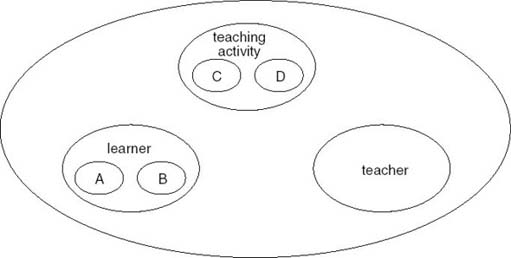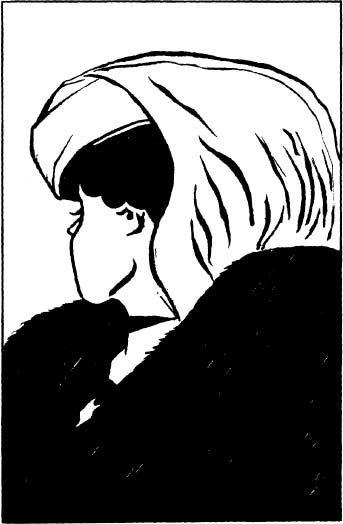3.2 The constructivist model of learning
This model of learning concentrates on what happens during the process of learning. It identifies the central role of concepts and understandings that learners bring to new learning and the way in which new and old ideas interact. Its starting point is that learners use their existing frameworks of understanding to interpret what is being taught, and that these existing ideas influence the speed and effectiveness with which new ideas are learned. Learners are actively involved in processing what is taught, and as a result, the same 'input' is perceived differently by different learners and may well have quite different outcomes.
This model of learning has been developed from studies of the kinds of learning required in higher education, and dissatisfaction with the acquisitive approach in this context. Its primary focus is on learning as a way of changing one's understanding, in particular coming to understand some aspect of an academic field of study (Ramsden, 1988). The learning process is seen as a product of the relationship between three interconnecting factors:
-
What students already know or can do.
-
What students think the subject they are studying is about and what it takes to learn it.
-
What teachers do, the tasks they set and the way these are interpreted by students.
A system map can help clarify this approach to learning. Such maps are a way of showing the component parts which interact to create a system that is greater than the sum of its parts. Although the component parts may interact, it is not customary to indicate this by lines or arrows on this particular type of diagram. Thus although there are strong interactions between learners, teachers and the teaching content and media, these are not shown in the system map of a constructivist approach to learning in Figure 2.

Activity 5
Task 1
Looking at Figure 2, try to identify what the components within the 'learner' and 'teaching activity' subsystems labelled with capital letters A, B, C and D stand for.
Task 2
Note that the boundary round the three components or subsystems in the map separates them from the area outside, which is the environment. The environment contains items which influence the interactions within the boundary of the system. As you look at Figure 2, think about appropriate items that could be shown in the environment.
Discussion
My answers to Task 1 in Activity 5 are as follows.
The components in the 'learner' subsystem (labelled A and B in Figure 2) represent:
(A) the learner's existing knowledge, skills and attitudes
(B) the learner's ideas about how to learn the subject matter of the teaching.
The components in the 'teaching activity' subsystem (labelled C and D in Figure 2) represent:
(C) the content of what is taught
(D) the methods and media used to teach it.
Your components may have been different, while it would also have been possible to indicate components for the teacher subsystem, because teachers also differ according to their existing knowledge, ideas and practices, including their ideas about teaching and learning their subject.
Task 2 concerned whether you could identify influences from the environment. Two such components in the environment could be the institution in which the teaching/learning transaction takes place, and the Examination Board or Qualification Standards which govern the award of credit for learning. As both the Primer and Diagramming packs suggest, the purpose for which the map is created will determine whether components are placed inside or outside the boundary. For my purposes here, attention is focused on the interaction between who is learning, who is teaching and what the content and methods of the teaching are (including the media used). For this reason, I would place the institution and other elements in the environment outside the system, though they clearly do influence the interactions inside the system. You may want to have other elements in the environment of your system map.
For teaching which is based on a constructivist model of learning, the starting point is to help students integrate new learning with what they already know. This will very likely mean that existing ideas will have to change, sometimes extensively, especially if the new learning conflicts with existing assumptions and attitudes. The danger otherwise is that we do not realise the contradictions between old and new learning, and existing ways of thinking will tend to undermine new learning.
This also means that we need to be aware of how new learning affects what we already know and do. We need to engage in activities which really do foster the new understanding they are aiming for. Without this emphasis on understanding ideas for ourselves and in our own words, study can lead to patchy or superficial understanding. Overemphasis on memorising also tends to take attention away from the effort of understanding.
One of the ways in which understanding develops is by trying to work out the structure of what is being communicated, so that we can see what the relationship is between the different parts and make sense of the whole. As Laurillard has commented, 'The same information structured differently, has a different meaning' (Laurillard, 1993). We all know for example, the 'catch' drawings where we can see the same pattern of dots and lines two ways, depending on the structure we give it. Figure 3 is an example. It can be seen either as a young girl or an old woman, depending on which structure we impose on the information.

